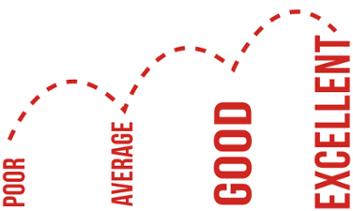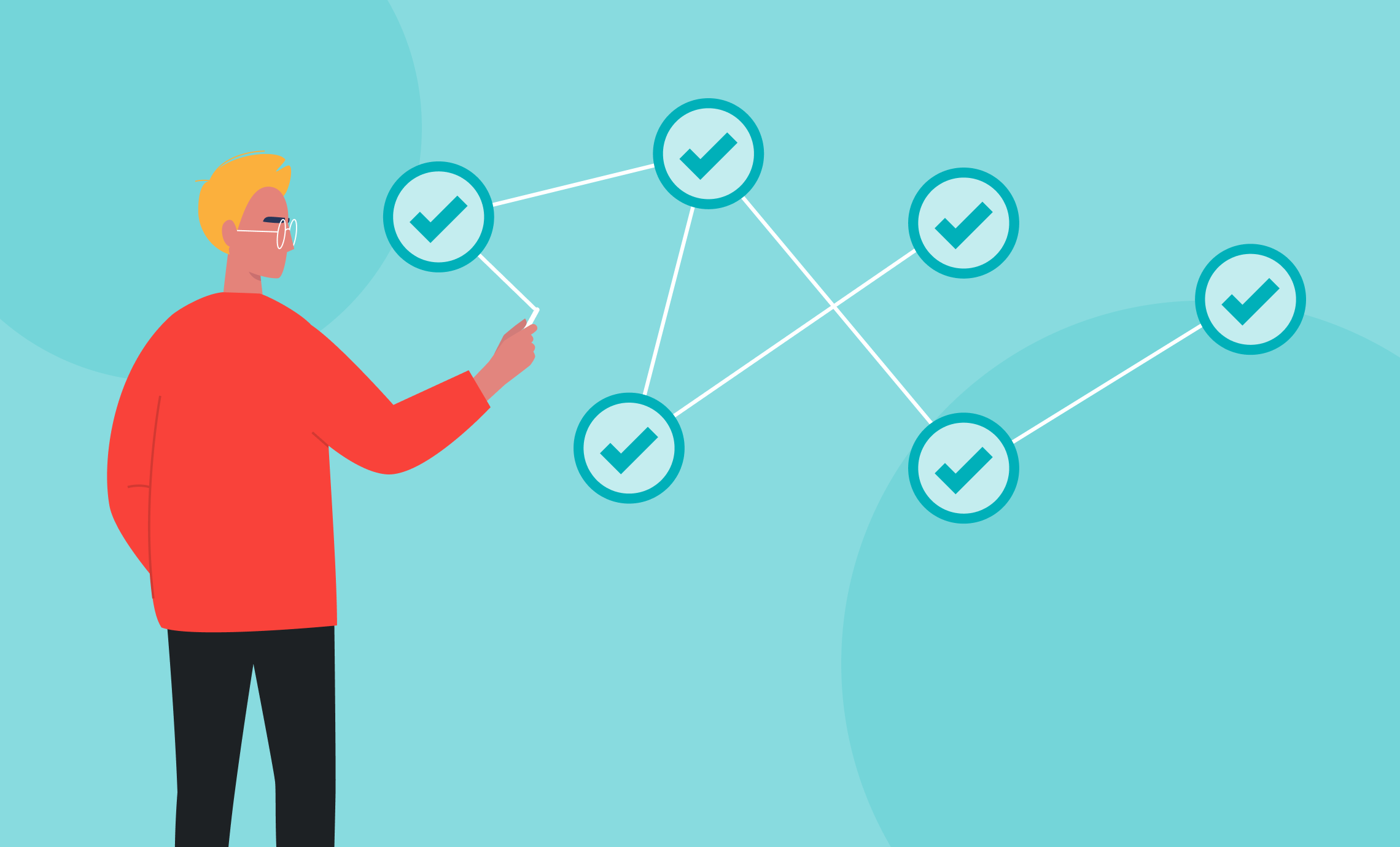So You Want to Be an Association Inbound Marketer?
Organizations are 3x more likely to see a higher ROI from inbound marketing than outbound, but we’re not going to lie to you—that doesn’t happen overnight. Inbound marketing is a dramatic departure from the traditional outbound approach most of us grew up with and that many universities are still teaching.
Inbound has much less to do with direct mail, trade shows, and print ads and more to do with social media, blogging and content creation, email marketing, web design, and other factors you’ll learn all about here.
Inbound marketing for associations is a long-term commitment that takes time to master, but in this guide, we’re going to give a simple ten-step crash course to help you learn and implement the methodology in your association marketing strategy in as little as 90 days.
Is your association willing to change for 3x the ROI?
Unlock our complete 10-step eBook to get your association
started with Inbound Marketing.
Step 1: Get Educated on Inbound
Inbound marketing is an intuitive, holistic methodology that takes time to learn all about.
Before you even think about starting to develop an inbound strategy for your association, take advantage of the thousands of free resources available online to study the inbound methodology from the ground up.
How to Learn the Inbound Methodology
With thousands upon thousands of resources available online, which ones actually deserve your attention? We’ve combed through the latest and greatest to give you some solid resources to get started with.
Get the Free HubSpot Inbound Certification, made up of 12 classes (a total of 4.5 hours of video). The HubSpot Inbound Marketing course is quite possibly the most comprehensive introduction to the inbound methodology that money can buy—but get this, it’s actually free. Available to anyone interested in inbound, the Inbound Marketing Course covers SEO, blogging, landing pages, lead nurturing, conversion analysis, and reporting. At the end of the course, you’ll know what it means to attract, convert, close, and delight, and how this is the foundation for an effective inbound marketing strategy.
Once finished, your certification is valid for 13 months, and after you pass the online exam, you’ll receive a personalized certificate and badge to use on your website, email signature, or social media profile.
Devour These Crucial Industry Blogs
These blogs will give you the most up-to-date resources for learning new inbound marketing strategies that can be applied to your association today. Don’t let them fall into the black hole that is your Pocket; subscribe and read them if you want to stay on top.
- Aptify (A more holistic discussion on associations, but we do dedicate quite a bit to association membership challenges you might find helpful.)
- IMPACT
- HubSpot
- KissMetrics
- Unbounce
- Neil Patel
- CopyHackers
- Social Media Examiner
- Inbound MarTech
Step 2: Build Your Inbound Team
Far too often in the association management world, we encounter associations that take a very passive approach to inbound marketing.
Going through the motions of creating some social media accounts and perhaps a blog just won’t cut it with inbound.
Inbound is a dynamic interaction between associations and members: a “go-all-in” commitment no matter what kind of organization you are.
To do it right, you need to form a team that is dedicated to its planning and execution for the long-term. It requires an intuitive understanding of both communication, analytics, and the digital world.
At a minimum, your association’s inbound team should consist of: a marketing strategist, content copywriter, designer, web developer, and marketing coordinator.
This may seem out of reach from a budget perspective, but let’s dig into each of these roles so you can understand the type of skills needed to run an effective inbound marketing program.
Marketing Strategist:
Like the title suggests, your strategist is in charge of planning and overseeing the overall execution of your inbound marketing strategy. They’re usually the team member managing projects and team members and monitoring the results. They’re your tinkerer, innovator, and dream maker to take the data you have and turn it into golden marketing strategies.
Content Writer:
With inbound marketing, content is key. Website copy, landing pages, blogs, emails, and eBooks, all of these must effectively communicate to your target personas (which we’ll get into in Step 4) and help drive action. To achieve this, your content copywriter needs to be fully versed in your industry, the offerings your association currently has, the culture or voice you want your content to have, and the persona you’re aiming to reach with your posts.
Designer:
Your inbound marketing designer’s job is to take the copywriter’s content and create visuals that drive the message home.
This includes website designs, eBooks, infographics, and social media graphics. Your designer must know your association’s goals, audience, and branding to ensure that their designs are in-line with all three.
Web Developer:
The web developer’s role is to take the designer’s work and implement them on your website, keeping your goals and audience in mind.
Depending on the complexity, they’ll be in charge of monitoring and updating your website as well as working with your designer and team to determine the most technically effective way to execute your strategies.
Marketing Coordinator:
Last but not least, your marketing coordinator is largely in charge of implementing your strategy. Their responsibilities may include, but are not limited to, blog optimization, keyword and buyer persona research, and social media publishing.
What if I can’t hire?
Now, we know adding five members to your team isn’t easy on your budget or your HR department. If it doesn’t seem doable right now, consider reorganizing and training some existing team members in the methodology or partnering with an agency. Working with a well-known, trusted inbound marketing agency will help you easily fill all of these seats with skilled, experienced professionals for a fraction of the cost and hassle.
Step 3: Assess Your Association’s Current Marketing Strategy
In order to reach your marketing goals, it’s essential to see where you are in order to determine where you want to go. That’s why Step 3 in our crash course is so important.
Before starting any new marketing program, take into account your association’s current performance. It’s critical that you take time to reflect on your current marketing efforts and environment and objectively evaluate how they are doing. Ask yourself:
- What are we doing now?
- How is it performing?
- What marketing assets do we currently have? (i.e., website, online content, printed content, videos, presentations, testimonials, etc.)
- What is our budget?
- What is going on in our industry or environment that may affect what we’re doing? (i.e., threats, opportunities, legislation, etc.)
If you’re already investing in digital marketing or have a web presence, you will also want to ask yourself:
- What KPIs are you currently measuring?
- What does your website traffic look like? Where is it coming from?
- What are your most popular pages?
- What keywords are you ranking for? (or could rank for?)
- What are your website conversion rates?
- What does your current social media presence look like?
- What does your contact database look like?
- How is your email marketing performing?
Based on your answers to these questions and the results of your current initiatives, you’ll be more able to determine what needs to be done with your marketing moving forward.
Now that you have the first 3 steps to getting your association started with Inbound Marketing, it’s time to take on the next 7. In these next crucial steps, you’ll learn everything from how to assess your current marketing program to creating a launchpad website. Click the button below to unlock all 10 steps.
Is your association willing to change for 3x the ROI?
Unlock our complete 10-Step eBook to get your association
started with Inbound Marketing.



